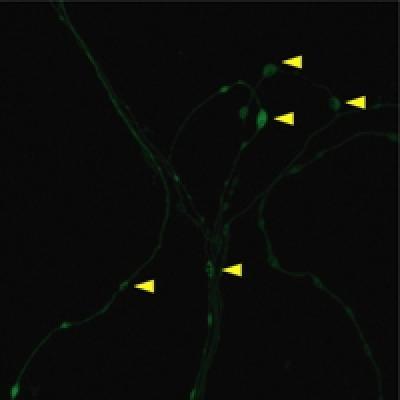In order to survive and assert ourselves, we always need to be able to acquire and create new memories. In a recent study, scientists at the Montreal Institute and Neurological Hospital (The Neuro), McGill University and the University of California, Los Angeles for the first time captured the image of a mechanism especially protein conversion - a process deep within memory formation.
This study provides the first image to demonstrate that when a new memory is formed, it will also produce new proteins around the area at synapses - also known as the place where the nerve cells meet. Menstrual - increases the connective strength of synapses and strengthens the memory of the brain. The study published in this Science has important implications, providing a deeper understanding of how each memory is made and the ability to control and adjust that memory in real time, and from there. help us to understand the process of forming memory.
In order to visualize what is happening at each of the smaller levels in the brain, we need to pay attention to two important factors. First, it is necessary to have stability at a certain level because the brain needs to maintain a lot of information for a long time. Second, the system also needs to be extremely flexible to absorb and adapt to change.

For this reason, scientists have focused on key synapses in the brain's exchange and storage mechanisms. This mechanism is also known as the flexible neural mechanism, forming a wide-ranging network but also often changing abnormally. It is able to change, adapt and be a basic element of receptive and memorizing.
But according to Professor Wayne Sossin, a scientist who studies the nervous system of The Neuro Center and his colleagues, if that network changes constantly, how memories can be stable and they will How are they formed? Although it is known that the process of transformation, also known as the production of new proteins at synapses that enhance joint alignment, plays an important role in strengthening memory, but until now. There is still no specific image to illustrate the process . 'We were able to visualize a sketch of protein synthesis during memory formation. In order to be able to do this we had to rely on fluorescent proteins to make it easier to detect and identify directions. ' It is important that this transformation is specific to each synapse and that it requires activation of other cells. This suggests that protein conversion requires cooperation between the pre and post parts of the nerve nodes, where two neurons meet. Thus, it is clear that there is a regulatory transition occurring at joints in the long-term flexible neurological mechanism and the mechanism requires signs from synapses and protein transitions.
Long-term memory and flexible neurological mechanisms require changes in gene hiding, but it can still occur in the way of neurosurgery. This study has demonstrated that the intermediate mechanism of gene hiding includes the systematic transformation of mRNA around stimulated synapses. This finding has made an important contribution to understanding the establishment of molecular-level mechanisms that occur during long-term memory formation. Moreover, it also has great benefits, helping to detect diseases related to memory impairment.
This research is funded by the National Institutes of Health, WM Keck Foundation and Canadian Health Research Institute.
 'Fine laughs' - Scary and painful torture in ancient times
'Fine laughs' - Scary and painful torture in ancient times The sequence of numbers 142857 of the Egyptian pyramids is known as the strangest number in the world - Why?
The sequence of numbers 142857 of the Egyptian pyramids is known as the strangest number in the world - Why? History of the iron
History of the iron What is alum?
What is alum?